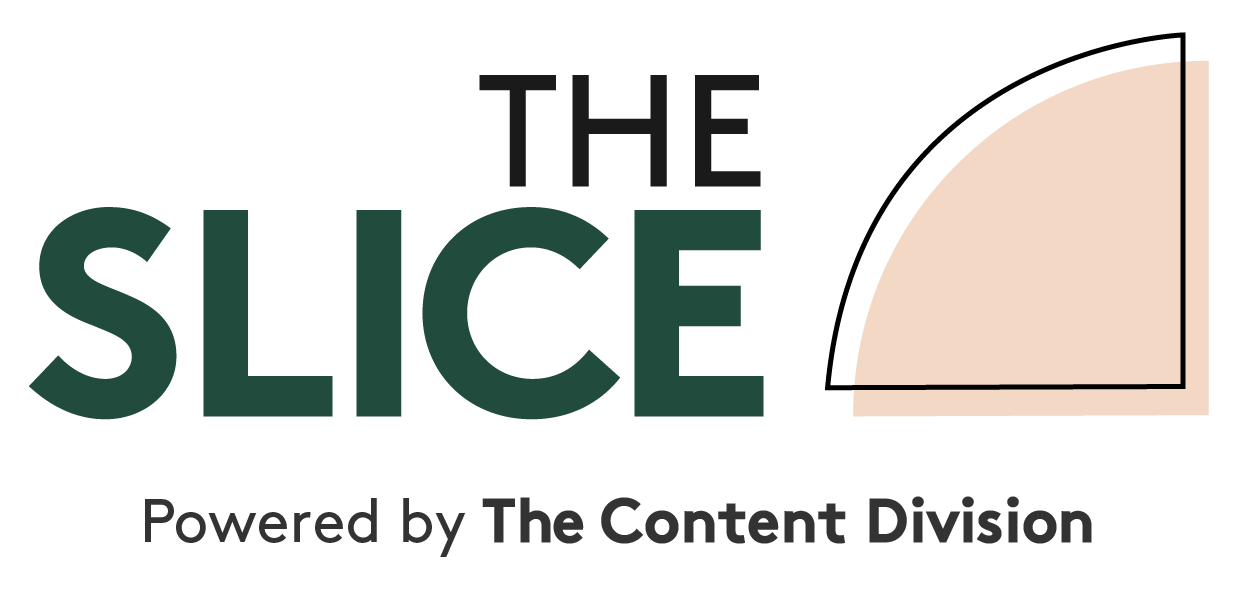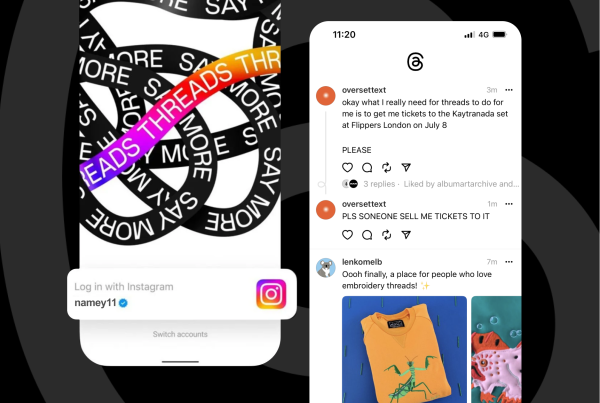
When you talk to company leaders, PR executives, marketing folk and others stakeholders in an organisation about thought leadership, you’ll more than likely get a differing range of opinions about what it is, and whether it straight up sucks or cuts the mustard as a marketing tactic.
For good marketers, the real answer to both the definition and whether to use it as a tactic should be a strong “it depends”.
Defining what it means for your organisation should lay bare the fact that a value exchange of perceived knowledge or opinion for a focused, potentially long-term business objective needs to happen.
But the greyest areas lie in what exactly that value is for a company.
There’s certainly evidence that having a thought leadership program can drive serious business results, from awareness about company expertise and higher perceived brand value around products and services, right through to account-based leads and sales, and probably the most important thing: trust.
A well-run program can deliver even more.
But the value exchange can feel like one-way traffic for those brands that become impatient or aren’t willing to tread out the well-worn steps of consistent, high-value, original content that align with a business objective.
From our experience in running thought leadership programs for clients there are immense benefits for those business that need laser-like targeting to reach their prospects – even more so for those businesses that exist in extreme niches with fewer, but more high-value sales.
So where do you start?
Always start with your business objectives. Always.
It’s a vital starting point but also the root of where things can go astray. Because establishing a thought leadership program also means testing your organisation’s appetite for risk. If your business is scared of what people might say about it, getting your C-suite or other staff to amplify their opinions, expertise or even contentious takes is probably not for you.
Because if you attempt to use this as another comms or PR-controlled channel packed with your key messages, your audience will sniff you straight out. And that will fall on deaf ears, blind eyes and uninspired customers.
So what are the objectives that have the most impact? A lot of enterprise businesses want to establish influence and change perceptions. Others want to showcase the expertise of individuals in key segments. Some midsize to smaller businesses want exposure to high value leads or to establish authority. The microbusinesses, or sole traders, may just want to sell things.
All are highly valid objectives. But make it clear from the start what the main objective is, and plot it on your customer journey map. Because thought leadership alone won’t take care of the whole process.
How do you measure the success of your program?
This is why establishing and agreeing upon the objective first is so important. Because agreeing on how to measure its effectiveness can reveal what your program really needs to look like. If you want to establish influence or change the perception of your brand in a risky industry, trying to measure your success by the amount new sales you get may leave you feeling deflated.
Instead, measure the net promoter score of your customer base to give you an idea of how they are feeling about what you do. Or look for share of voice and amount of mentions in social media, niche publications or mainstream media. Because those who change perceptions and establish influence get asked to do things, like interviews, speaking gigs, workshops, private presentations and more. The sales come further down the customer journey, but it may not be thought leadership that wins the day – product innovation, case studies and testimonials, helpful sales processes and loyalty programs may form the rest of the journey.
If the objective is to develop relationships with more high-value leads, you have a few measurement options. How many more of your target market receive your thought leadership content? Measure subscribers or email acquisition. Even better, how many of your prospects are featured in your thought leadership? Set a target for the amount of prospects you’ll reach out to so they can be featured.
Want to sell things? Measure sales. Der. But be sure to nail your tactical approach. Like only speaking to audiences who know you already, and whom you know are high value. Or only offering workshops to highly qualified leads. Or focusing on content, like gated e-books, that deliver data acquisition.
What does your thought leadership program look like?
Now you know your objective and how you’re going to measure it, you can move on to the tactics. You’ll need research around channels, content types, customers and more, and all of it should feed into the things you create.
There are so many different tactics: blogs, videos, ebooks, workshops, keynote speeches, earned media or network articles, content hubs, and more. So how do you know what’s right for your business? It really comes down to the research and the resources, time and money you’re willing to put into it in exchange for achieving that objective and the value of it.
Here are a few examples to help focus your approach.
Enterprise thought leadership
Philips’ Future Health Index
This storytelling and research report microsite by electronics giant Philips positions the company as the thought leader in advanced healthcare technology – the kind of stuff that changes health outcomes for cities, countries and even the entire world. That’s some big thinking.
Its Future Health Index Report is the kind of meaty, in-depth research that would truly attract the kinds of prospects the company health technology sector would covet – decision makers around health policy and the health care professionals who actually use the tech firsthand.
GE’s Txchnologist Tumblr blog
The strategy behind this blog is to showcase GE’s focus on creating the things that will power our futures – from a business that has pretty much powered our past.
There are so many snackable content items here anyone who’s keen to see how the next 100 years may look for our society will be captivated – and that’s pretty much everyone. Articles about how clockmakers are turning their skills to fusion technology or how plant-growing robots can seek out light show GE as society-changers.
Autodesk’s Redshift website
Autodesk is probably the world’s leading company in regards to computer assisted design software, and knows that inspiring industrial designers, architects, engineers and more of their customer segments to do bigger, better and different design work is a huge benefit to them.
Enter the company’s Redshift website, the content mission of which is: “To help designers and engineers design a better and more sustainable world for future generations.” It sounds a bit purpose-driven (I can hear our sceptical ad agency friends collectively gasping at doing something for the good of it) but on a communications level it really is so much more.
The site delves into how products, buildings, cities and more will be made tomorrow, in the next decade and in the next century. It focuses on materials innovation, technology and design, and establishes Autodesk as the leader in how things will be made now and into the future.
Also, check out what an actual redshift is. It’s super cool.
Small-to-medium business thought leadership
CTODaily with Jordan Duffy
This daily email delivered to thousands of chief technology officer types curates the best tech and innovation articles across the internet, all with added commentary from technology thought leader Jordan Duffy.
It establishes him as an expert commentator, but also gives his key audience a daily touchpoint with his brand that they are happy to receive. No selling.
BusinessDEPOT’s blogs and events
Business services company BusinessDEPOT is a cracking example of how to use thought leadership to engage, build trust and retain clients.
Their blog is good (helpful articles about business things) but their events are where the magic happens: segmented topics featuring expert speakers both from their business and from the wider business community. The events are often sold out, delivering fantastic data and lead prospects.
And making them the experts to turn to when their audiences need them.
Jay Acunzo’s book, podcast and speaking events
Jay Acunzo would totally hate this blog because it’s handing out advice based on best practices. For Jay, “best practice” only gets you so far – he says when you trust your gut instincts amazing things happen in your world of work. And he’s built a mini thought leadership content empire telling people so.
His podcast, Unthinkable, features stories from businesspeople who dare to question and smash conventional thinking. It’s actually a masterful lesson in how to interview, record and edit a podcast. Forget good quality gear – getting the show host and format right is what really makes lemonade.
His book, Break the Wheel, digs even further into why conventional thinking delivers conventional results. He says it’s about making the best possible decisions in your situation, regardless of the best practice.
His keynote speeches and talks wrap it all up nicely in a bow, with truly engaging storytelling and impassioned calls for people to kill off the best practices to which they cling and think deeper about what works for them in their specific situations.
It’s a triple threat of thought leadership that has established him as a trustworthy, authoritative expert in his work. And while many take a similar approach, few craft truly unique narratives. Dare I say it’s a best practice at which many fail.





